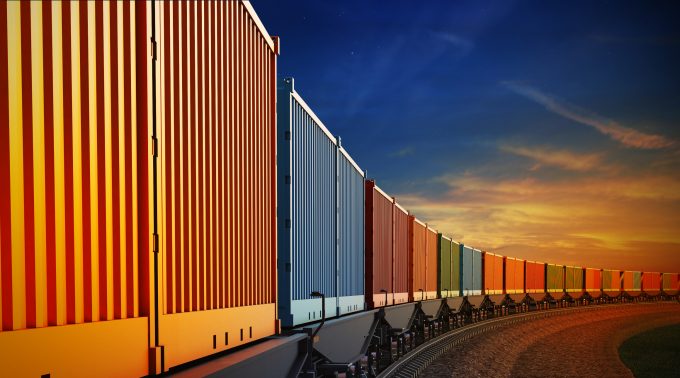Container spot rates have peaked as all major trades see prices fall
There was more evidence in this week’s container port freight markets that peak prices on ...
TFII: SOLID AS USUALMAERSK: WEAKENINGF: FALLING OFF A CLIFFAAPL: 'BOTTLENECK IN MAINLAND CHINA'AAPL: CHINA TRENDSDHL: GROWTH CAPEXR: ANOTHER SOLID DELIVERYMFT: HERE COMES THE FALLDSV: LOOK AT SCHENKER PERFORMANCEUPS: A WAVE OF DOWNGRADES DSV: BARGAIN BINKNX: EARNINGS OUTODFL: RISING AND FALLING AND THEN RISING
TFII: SOLID AS USUALMAERSK: WEAKENINGF: FALLING OFF A CLIFFAAPL: 'BOTTLENECK IN MAINLAND CHINA'AAPL: CHINA TRENDSDHL: GROWTH CAPEXR: ANOTHER SOLID DELIVERYMFT: HERE COMES THE FALLDSV: LOOK AT SCHENKER PERFORMANCEUPS: A WAVE OF DOWNGRADES DSV: BARGAIN BINKNX: EARNINGS OUTODFL: RISING AND FALLING AND THEN RISING

Despite rail services between China and Europe becoming increasingly popular amid blanked sailings and high air freight rates, the service from the UK has slim margins and takes too long.
“We have rarely used rail before, but we are now using it for UK exports” said one UK-based forwarder. “However, it is more expensive to get a container from the UK to Duisberg, than it is to move it from Duisburg to Xi’an,” he added.
“It also, realistically, takes about 25 days from the UK.”
But he said customers had read that it takes 14 days, spiking their interest.
Shippers have increased their enquiries about rail, agreed Anthony Plummer, UK managing director for Ligentia Enterprise.
“Enquiries for rail and road shipments from Asia have increased significantly due to the quicker transit times than seafreight. Services are now regular and reliable, giving customers confidence to move via rail and road.
“We find that providing options and visibility on all modes is key to helping supply chains react to the Covid-19 disruptions and allowing informed routing decisions to be made.”
But the UK forwarder said he would not necessarily encourage shippers to use eastbound rail services, from the UK at least.
“The schedules are regular and reliable, but I probably wouldn’t encourage shippers to use it. There’s not much of a margin. It’s about $2,500 from railhead to railhead, but the final leg can be another $2,500.
“But it’s probably worth it from Germany. If you can turn the container around for $700 and get an extra day or more, it becomes viable.”
He said it could take up to five days to get to Germany from the UK, and with sea freight taking 30 to 35 days and, normally, costing about $1,500 including pre-carriage, it was the better option. However, he did acknowledge that sea freight rates were currently high.
But he added: “Rail has to make a profit both ways, whereas container lines pay for the round trip and subsidise exports to get the container back. Sea and rail have different dynamics; rail essentially has two headhauls. And it can’t take that many containers.”
One sector, however, has increased its use of rail: postal services. April saw the first full-length mail container train, with a further 16 services since.
“Due to the limitations imposed on air freight, the railway channel offered by UTLC ERA started fulfilling the strategic role of a reliable link between China and Europe for uninterrupted mail delivery,” said Alexey Grom, its chief executive.
Comment on this article
Philip
September 02, 2020 at 10:39 pmAfter waiting over 80 days for shipment by rail with shippers blaming everything from rail jams to customs. Next time I will stick to sea transport